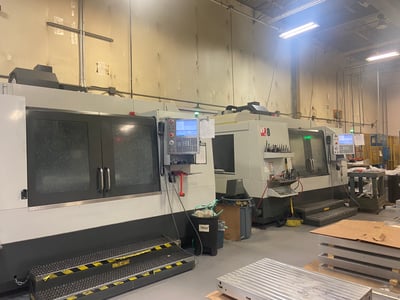
Thermoformed plastic packaging has many advantages. It’s durable, lightweight, and recyclable. It can be made tamper and leak-resistant and also cost-effective. Here, we’re taking you on a behind-the-scenes look at our thermoformed plastic packaging process, from initial concept to shipping to you, so you can see in detail how food packaging is designed and produced. It’s a process over 30 years in the making with efficiency and sustainability as core goals.
Before we dive into the process, let’s define some terms you’ll frequently hear during this process:
What is thermoformed plastic?
Thermoforming is a manufacturing process that uses heat and pressure to shape plastic into different shapes. First, it is pressed into a sheet, which can be virgin plastic or a combination of recycled and virgin plastic material. The plastic sheet is then heated using hot air or infrared radiation until it softens and becomes pliable. The softened plastic is then pressed into a mold to give it the desired shape.
The plastic is then left to cool and harden. Excess plastic around the edges is trimmed and often reserved for future use. From here, the product may go on for further processing, such as labeling or assembly.
The Thermoformed Plastic Manufacturing Process Step-by-Step
1. Ideation
Before stepping onto the manufacturing floor, we work closely with the customer to determine the best thermoformed packaging solution.
We begin with assessing needs and identifying problems. Do you need a leak-resistant package for a delivery service? Are you seeking a salad container that extends its shelf life? Are you looking for packaging for a new food product line? An expert design team will have the insights you need to create a package that meets your goals.
Next, we dive into how this product compares to similar products on the market. We conduct market and competitive research on packaging solutions to identify ways to help you stand out on the shelf. From there, we discuss our stock and custom options to determine which is right for you. Working alongside our packaging experts, we brainstorm concepts and create designs backed by extensive research and experience.
By the end of this step, Lacerta customers will then receive concept drawings from our in-house design team to review.
.jpg?width=400&height=320&name=T29329_Rendering%20(1).jpg)
Here's the concept art of our single-serve cupcake container.
2. Concept Review and Feedback
In addition to the concept drawings, Lacerta includes realistic renderings to showcase the packaging’s appearance. At this stage, customers provide feedback and refine their thermoformed packaging options, including color, material, thickness, barrier and coating.
To streamline review, we use Solidworks software, making communicating and evaluating your stock or custom packaging solution easy.
3. Prototyping and Analysis
This is where designs are put to the test.
Our prototyping team provides samples in chosen material options, including recyclable PET, PP, or PCR content. We evaluate features such as snap, lid integrity, film seal, and tamper resistance to ensure they are up to standard. Next, we test the material stressors along with product-package interaction to make necessary changes based on your feedback for production approval.
During this step, we also conduct a life cycle assessment to determine the sustainability attributes of the package. This is especially helpful to our customers who are considering ways to lower their carbon footprint. A life cycle assessment can quantify the impact of the selected packaging, as well as ways to reduce the carbon impact, such as switching to sustainable packaging that uses recycled PET.
4. Mold and Tooling
Next, we move from prototype to production. Each mold is evaluated and measured against the product before its release. If any issues arise, they are addressed, and the mold is tested and measured again.
Our engineering and manufacturing teams then meet to collaborate on the optimal run times. Based on the package, our tools can incorporate gun drilling, cooling, robotics, and stacking into the production process.
Once the manufacturing team determines the details of the production runs, we’re ready to start making your packaging!

Our CNC high water pressure aluminum mold cutting machines.
5. Thermoformed Plastic Packaging Production
We produce thermoformed plastic products at one of three locations nationwide on our fleet of 48 thermoforming machines. Once the molds are inserted into place, the heating process begins.
As we noted above, the plastic is heated until it softens, and then it’s pressed into shape within the mold. Once the plastic cools and hardens, the excess plastic around the edges is trimmed. The product is inspected to ensure quality and adherence to specs. From here, your packaging may be labeled or assembled.
We Take Thermoformed Plastic Seriously
Plastic food packaging isn’t simply a way to package your food products. To us, it’s also the way you keep food safe, prevent it from leaks and spills on the way home, and keep food fresh and delicious longer.
This dedication to packaging is part of why we’ve been Safe Quality Food (SQF 8.1 Level II) certified since 2015. Certification requires Lacerta to demonstrate a rigorous system to manage food safety risks and provide safe products to the food industry. SQF is recognized by the Global Food Safety Initiative (GFSI) as an approved certification body. Many leading food retailers and manufacturers today require GFSI-recognized certification.
We’d love to show you what we do best. For a closer look at our products, request a sample.




